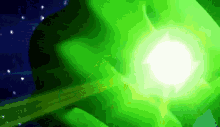Elim Garak
Veteran
The next planetary alignment will take place on January 21, 2025. In the evening, just after sunset, six planets — Mars, Jupiter, Uranus, Neptune, Venus, and Saturn — will align in the sky. Four of these planets (Mars, Jupiter, Venus, and Saturn) will be easily visible to the naked eye. You'll need a telescope or high-powered binoculars to see Neptune and Uranus. Now, let's take a closer look at the conditions for observing the planets.
Reddish Mars (mag -1.3) will shine on the eastern horizon, in the constellation Gemini.
Bright Jupiter (mag -2.6) will be positioned a little higher, in the constellation Taurus. If the sky is dark enough, you will be able to enjoy the beautiful Pleiades, Hyades and yellow Aldebaran that surround the planet and complete the picture. You can easily identify all these objects with the help of the Sky Tonight app.
Get high-powered binoculars to see Uranus (mag 5.7). It will be in the constellation Aries, near the border with Taurus.
The next three planets will be located closer to the western horizon. Neptune (mag 7.9) will be in the constellation Pisces, but you’ll need at least a pair of powerful binoculars to spot it. Yellowish Saturn (mag 0.6) and the "evening star" Venus (mag -4.7) will be easily visible. They will shine close together in the constellation Aquarius.
Another planetary alignment will take place on February 28, 2025. Don't miss it — according to the classification, it will be a great one!
In the evening, just after sunset, seven planets — Saturn, Mercury, Neptune, Venus, Uranus, Jupiter, and Mars — will align in the sky. Four of them (Mercury, Venus, Jupiter, and Mars) will be easily visible to the naked eye. For Uranus and Neptune, get a pair of binoculars or a small telescope. Saturn will be the most difficult target to see — you'll need to know the exact time for your exact location as the planet hangs close to the Sun.
Here are some details about each planet:
Reddish Mars (mag -0.4) will be highest in the sky, high above the southern horizon in the constellation Gemini.
Jupiter (mag -2.3), the second brightest planet, will be a little lower, in the constellation Taurus.
The next planet is Uranus (mag 5.8) in the constellation Aries, near the border of Taurus. Theoretically, it can be seen with the naked eye, but it requires a perfectly dark, clear sky, so we recommend using a pair of binoculars.
Closer to the western horizon, in Pisces, you'll find brilliant Venus (mag -4.8), the brightest planet in our sky. Also in Pisces, just above the western horizon, is Neptune (mag 7.8), the faintest planet. You'll need at least a pair of powerful binoculars to see it.
Look even closer to the horizon to find the elusive Mercury (mag -1.2). It'll be in the constellation Aquarius, close to the Sun.
And finally, we got to golden Saturn (mag 1.1), the most difficult planet to see in this alignment. Although it's usually bright enough to be easily visible in the night sky, this time, it's very close to the Sun. To see the planet in Aquarius, find a time when the Sun is already below the horizon, but Saturn hasn't yet set in your location. The free astronomy app Sky Tonight will help you — just launch the app, find Saturn on the sky map, and choose the perfect time using the Time Machine at the top of the screen.
Source: Planetary Alignment on January 21, 2025: How to See It




 We've finally arrived.
We've finally arrived.